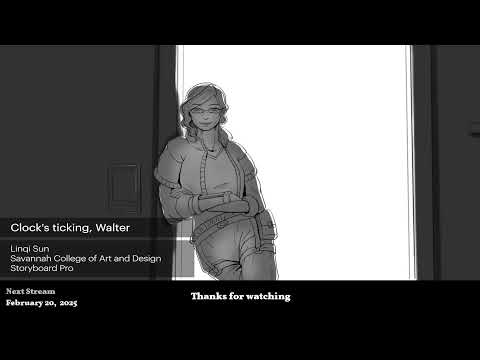Your Cart is Empty
Customer Testimonials
-
"Great customer service. The folks at Novedge were super helpful in navigating a somewhat complicated order including software upgrades and serial numbers in various stages of inactivity. They were friendly and helpful throughout the process.."
Ruben Ruckmark
"Quick & very helpful. We have been using Novedge for years and are very happy with their quick service when we need to make a purchase and excellent support resolving any issues."
Will Woodson
"Scott is the best. He reminds me about subscriptions dates, guides me in the correct direction for updates. He always responds promptly to me. He is literally the reason I continue to work with Novedge and will do so in the future."
Edward Mchugh
"Calvin Lok is “the man”. After my purchase of Sketchup 2021, he called me and provided step-by-step instructions to ease me through difficulties I was having with the setup of my new software."
Mike Borzage
Design Software History: The Evolution of Real-Time Rendering in Design Software: From Foundations to Future Innovations
December 06, 2024 9 min read


Introduction
In the dynamic world of design software, real-time rendering technologies have emerged as a pivotal force, revolutionizing the way designers visualize and interact with their creations. From architects crafting immersive environments to product designers shaping the next generation of consumer goods, the ability to render images instantaneously has transformed the design workflow. Real-time rendering bridges the gap between imagination and visualization, enabling immediate feedback and fostering innovation like never before. The evolution of these technologies has been marked by significant milestones and contributions from key players in the industry, propelling the capabilities of design software to new heights.
At the forefront of this evolution are pioneering companies and visionaries who have pushed the boundaries of what is possible. Companies like Autodesk have integrated real-time rendering into their suite of tools, enhancing the user experience and efficiency. Meanwhile, the development of cutting-edge engines like Epic Games’ Unreal Engine has democratized access to high-fidelity real-time rendering, impacting industries beyond gaming, including architecture and engineering. These advancements have not only accelerated design processes but have also expanded the horizons of what can be achieved within digital environments.
As we delve into the history and progression of real-time rendering technologies, it is essential to acknowledge the foundational breakthroughs and the innovative minds that have shaped this field. From the early days of simple rasterized images to the complex, photorealistic renderings achievable today, the journey of real-time rendering is a testament to human ingenuity and the relentless pursuit of realism in digital design. This exploration will illuminate the key developments and technological advancements that continue to drive the future of design software.
Historical Context and Early Developments
The origins of rendering technologies in computer-aided design (CAD) software trace back to the fundamental quest for accurate and efficient visualization of objects and environments. In the early days, CAD systems were primarily focused on drafting and 2D representations, but the desire to model and render three-dimensional objects led to groundbreaking innovations. One of the earliest significant contributions came from Larry Roberts, often referred to as the father of computer graphics, who in 1963 developed the first computer program capable of displaying a 3D object. His work laid the foundation for the development of 3D visualization and rendering techniques in design software.
Key innovations during this period set the stage for the emergence of real-time rendering. Rasterization, a process of converting vector graphics into a raster image (pixels or dots), became a fundamental technique for rendering images on screens. It allowed for the representation of complex images and was instrumental in the development of shaded surfaces, giving depth and realism to digital models. The introduction of shaded surfaces enabled designers to perceive their models more intuitively, moving beyond wireframe representations.
The theoretical underpinnings of rendering also owe much to earlier scientific advancements. Johannes Kepler, a 17th-century astronomer and mathematician, made significant contributions to the understanding of optics and light, which are essential in rendering. His laws of planetary motion and studies on the nature of vision and lenses informed later computational models of light and shading. Although not directly involved in computer graphics, Kepler's work influenced the mathematical models that underpin rendering algorithms.
In the progression from basic visualization to more sophisticated rendering techniques, several other key figures and companies played pivotal roles. Ivan Sutherland's development of Sketchpad in 1963 introduced the concept of interactive graphics, which was a precursor to interactive design software. Moreover, the establishment of companies like Silicon Graphics (SGI) in the 1980s advanced the field by providing hardware capable of handling complex graphical computations, essential for more advanced rendering tasks.
The collaboration between software and hardware advancements during this era was crucial. As software algorithms became more capable, there was a parallel need for hardware that could support increased computational demands. This synergy propelled the capabilities of rendering technologies forward, setting the groundwork for the real-time rendering solutions we have today.
Another landmark in the early development of rendering technologies was the introduction of the z-buffer algorithm by Edwin Catmull in the 1970s. This algorithm allowed for the correct rendering of overlapping objects by keeping track of depth information, a critical step towards realistic 3D graphics. Catmull's work, alongside others at the New York Institute of Technology Computer Graphics Lab, significantly pushed the boundaries of what could be visualized on a computer screen.
Throughout the 1980s and 1990s, the evolution of rendering technologies accelerated. Companies like Autodesk emerged as leaders in the CAD software industry, introducing products such as AutoCAD that became industry standards. The integration of rendering capabilities into these software packages enabled designers and engineers to produce more realistic and detailed visualizations of their projects. The progress during this period was marked by a shift from purely functional representations to images that could closely mimic real-world appearances.
The cumulative efforts of these innovators and companies established a robust foundation for the development of real-time rendering technologies. By solving fundamental challenges in rendering and visualization, they enabled subsequent generations of software to achieve greater levels of realism and interactivity. Their contributions highlight the importance of interdisciplinary collaboration, combining insights from mathematics, physics, computer science, and engineering to advance the field of design software.
Technological Advancements in Real-Time Rendering
The technological strides in real-time rendering have been propelled by simultaneous advancements in algorithms and hardware capabilities. From the initial implementation of basic shading models, rendering algorithms have evolved to simulate the intricate behaviors of light in the real world. The Phong shading model, introduced in the 1970s by Bui Tuong Phong, was a significant breakthrough, allowing for the representation of smooth surfaces with specular highlights. This model laid the groundwork for more sophisticated techniques that would enhance realism in rendered images.
One of the most significant advancements in rendering algorithms is the development of ray tracing. Ray tracing simulates the way light interacts with objects by tracing the path of light rays as they bounce off surfaces. Introduced in the 1980s, this technique was computationally intensive and initially impractical for real-time applications. However, with the advent of more powerful hardware, it became increasingly feasible. Global illumination, an extension of ray tracing, accounts for indirect lighting and reflections, producing images with unparalleled realism. These advanced algorithms have revolutionized how light and shadows are represented in digital environments, making renderings more lifelike than ever before.
The evolution of hardware, particularly the advent of graphics processing units (GPUs), has been instrumental in enabling real-time rendering. GPUs are specialized electronic circuits designed to accelerate image creation in a frame buffer intended for output to a display. Companies like NVIDIA and AMD have been at the forefront of GPU development, producing increasingly powerful and efficient units. The introduction of NVIDIA's CUDA architecture allowed for general-purpose computing on GPUs, vastly expanding their capabilities beyond traditional graphics tasks.
High-performance computing and parallel processing have further enhanced rendering capabilities. By distributing rendering tasks across multiple processors or cores, it is possible to handle the vast computations required for real-time rendering. This has opened the door to more complex simulations and visualizations that were previously unattainable in real time. The synergy between improved algorithms and hardware has been crucial in overcoming the computational challenges inherent in rendering.
Significant software applications have harnessed these technological advancements to provide powerful tools for designers and developers. Epic Games' Unreal Engine is a prime example, offering a comprehensive suite for real-time rendering that is widely used in various industries beyond gaming. Its ability to produce high-quality, photorealistic renderings in real time has made it a valuable asset for architects, filmmakers, and visual artists. Similarly, Autodesk's suite of tools, including 3ds Max and Maya, has integrated real-time rendering capabilities, allowing users to see immediate results as they design.
Key features of modern real-time rendering software include:
- Physically-based rendering (PBR) materials that simulate real-world textures and surfaces.
- Real-time ray tracing enabled by advanced GPUs, enhancing visual fidelity.
- Advanced lighting models that provide dynamic shadows and reflections.
- Interactive environment editing, allowing for instantaneous changes and feedback.
These capabilities have transformed the workflow of designers and artists, enabling a more iterative and creative process. The ability to see changes immediately fosters experimentation and innovation, as there is less delay between concept and visualization.
Moreover, the integration of real-time rendering into virtual and augmented reality platforms has expanded its applications. By providing immersive experiences, designers can evaluate their work in a more intuitive and engaging manner. This shift is changing not only how designs are created but also how they are presented and experienced by clients and stakeholders.
Continuing advancements in both software and hardware promise to further push the boundaries of real-time rendering. With the ongoing development of technologies like NVIDIA's RTX platform, which leverages AI for denoising and accelerating ray tracing, the gap between pre-rendered and real-time graphics is narrowing. These innovations suggest a future where real-time rendering becomes the standard across all areas of digital design and visualization.
Current Applications and Future Directions
Today, real-time rendering technologies are indispensable across a multitude of industries, fundamentally altering how designs are conceived, developed, and presented. In architecture, real-time rendering allows architects to create immersive walkthroughs of building designs before construction begins. Tools like Autodesk's Revit, combined with real-time rendering engines, enable the visualization of complex structures with realistic lighting and materials, enhancing client understanding and facilitating design decisions.
In product design, the ability to render products in real time aids in evaluating aesthetics, ergonomics, and functionality. Designers can quickly iterate on ideas, making immediate adjustments and seeing the results instantaneously. This accelerates the development process and improves the final product quality. The automotive industry, for example, utilizes real-time rendering to visualize vehicles with accurate materials and environmental interactions, assisting in both design and marketing.
The gaming industry continues to be a driving force behind advancements in real-time rendering. Game engines like Unreal Engine and Unity provide platforms that not only render complex graphics in real time but also support interactive environments and physics simulations. The demand for more realistic and immersive gaming experiences pushes the boundaries of what can be achieved, spurring innovations that benefit other sectors as well.
Virtual reality (VR) and augmented reality (AR) represent frontiers where real-time rendering is crucial. In VR, the need for high frame rates and low latency requires highly optimized rendering solutions to maintain immersion and prevent user discomfort. Real-time rendering enables interactive and immersive experiences in VR and AR applications, which are increasingly used in fields like education, healthcare, and remote collaboration.
The integration of AI and machine learning is one of the most exciting developments enhancing real-time rendering processes. AI algorithms are being used to optimize rendering workflows, reduce noise in ray-traced images, and even generate complex textures and materials procedurally. NVIDIA's AI-powered DLSS (Deep Learning Super Sampling) technology, for instance, uses neural networks to produce high-resolution images without the performance cost traditionally associated with high-resolution rendering.
Emerging trends in real-time rendering include:
- The adoption of real-time path tracing, providing even more realistic lighting and shadows.
- Cloud-based rendering services, allowing for scalable and accessible rendering capabilities.
- Interoperability between software platforms, enhancing collaboration and workflow efficiency.
- Enhanced simulation of complex phenomena like fluid dynamics and particle systems in real time.
These advancements point towards a future where the line between real and virtual becomes increasingly blurred. Designers will have at their disposal tools that can simulate the physical world with astonishing accuracy, enabling them to push creative boundaries further.
Looking ahead, the continued development of quantum computing and its potential impact on rendering cannot be overlooked. While still in its infancy, quantum computing promises to solve computational problems significantly faster than current technologies, which could revolutionize real-time rendering by handling complex calculations instantaneously.
Moreover, as industries continue to embrace digital transformation, the demand for real-time rendering technologies will grow. The concept of the metaverse—a collective virtual shared space—is gaining traction, and real-time rendering will be a cornerstone in building these expansive and interactive digital worlds. This will not only affect entertainment but also how businesses operate, how education is delivered, and how societies interact.
Ultimately, the future of real-time rendering in design software is one of boundless opportunity. The convergence of advanced algorithms, powerful hardware, and intelligent systems is creating tools that empower designers like never before. As these technologies become more accessible and integrated into various platforms, they will continue to reshape industries and redefine what is possible in digital design and visualization.
Conclusion
Real-time rendering technologies have profoundly transformed design software, reshaping how designers and engineers envision, create, and interact with digital models. From their humble beginnings in basic visualization techniques to the sophisticated, photorealistic renderings achievable today, these technologies have bridged the gap between concept and reality. They have made it possible to experience designs in a more immediate and immersive way, enhancing creativity, efficiency, and collaboration across multiple industries.
The journey of real-time rendering is marked by the relentless pursuit of realism and interactivity. Pioneers like Larry Roberts and advancements by companies such as Autodesk and Epic Games have been instrumental in driving this evolution. The integration of powerful algorithms, high-performance hardware, and now artificial intelligence has expanded the horizons of what can be achieved within design software. The ability to render complex scenes instantaneously has not only improved design workflows but also opened up new avenues in gaming, virtual reality, and beyond.
As we look to the future, the potential developments in real-time rendering are both exciting and transformative. The continued convergence of technology trends suggests that we will see even greater realism, faster performance, and more intelligent systems. Designers and industries must stay abreast of these changes to leverage the full benefits and stay competitive in an increasingly digital world.
In reflection, real-time rendering technologies are not just tools—they are catalysts for innovation. They enhance our ability to communicate ideas, understand complex concepts, and explore new possibilities. As these technologies continue to evolve, they will undoubtedly play an even more crucial role in shaping the landscapes of design, entertainment, and technology.
Also in Design News

2D/3D Animation:Collaboratory with Mike Morris and Aaron Paetz
February 20, 2025 1 min read
Read More
ZBrush Tip: Enhancing Organic Sculpting Techniques in ZBrush: Key Tips and Resources
February 20, 2025 2 min read
Read More
Revit Tip: Mastering Revit's Edit Profile Tool for Customized Design Efficiency
February 20, 2025 2 min read
Read MoreSubscribe
Sign up to get the latest on sales, new releases and more …


